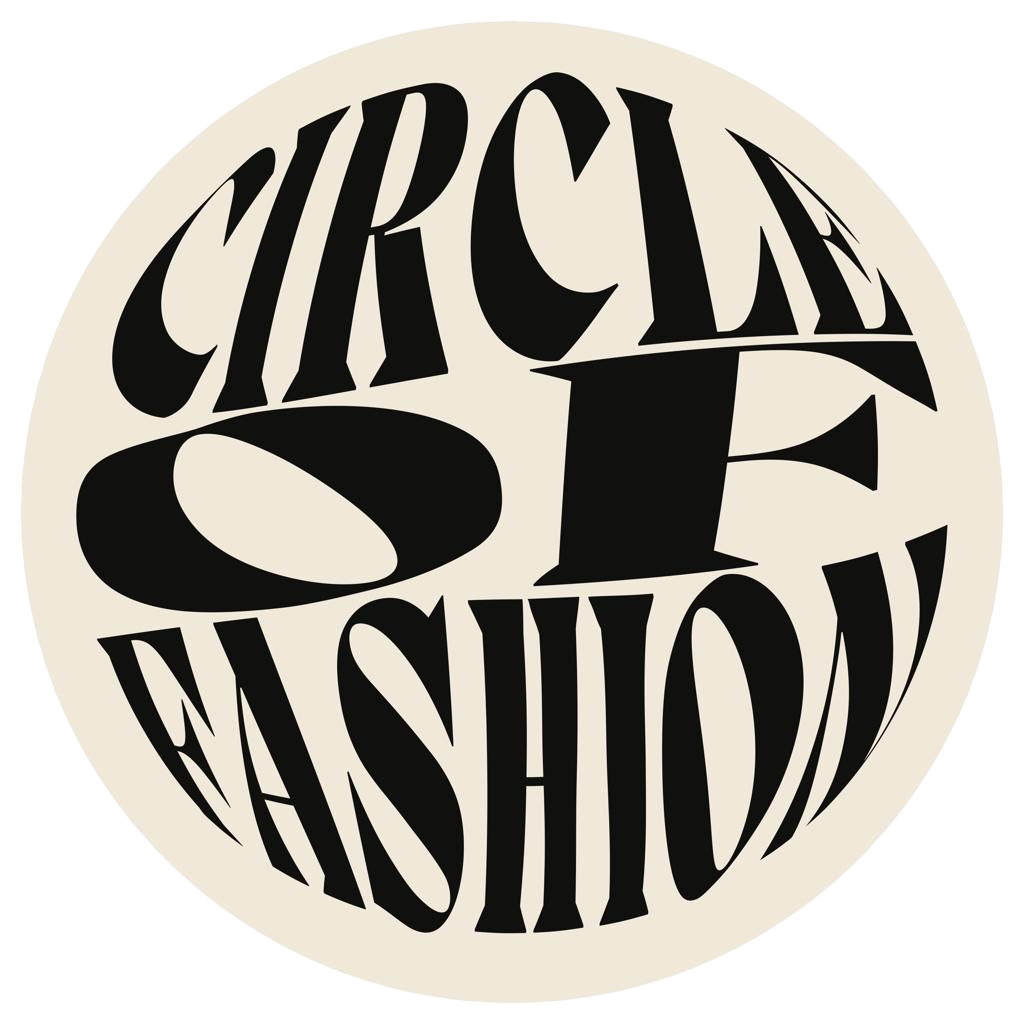Zoё Frantz
Edited by Leah Champagne
David Bowie will always have a special place in my heart. Not only does he have a prolific catalogue of music, but through his ever-evolving on-stage personas, he has encouraged people to be themselves, even if those around them did not. Most known for his bright red hair and blue and red lightning bolt makeup on the cover of Aladdin Sane, Bowie challenged the status quo of fashion long before he became as revered as he is today. In this article, I will be analyzing some of my favourite David Bowie personas and moments in fashion.
Major Tom (1969)
The first character that David Bowie developed was Major Tom. Although he was debuted in 1969 for “Space Oddity,” he pops back up throughout Bowie’s career, like in “Ashes to Ashes” from his 1980 LP Scary Monsters and Super Creeps (in this song, Bowie sings “We know Major Tom’s a junkie”). Major Tom is a fictional astronaut, characterized by a futurist, white leather astronaut suit. He is seen wearing a thick white belt and wears a powder blue singlet over his suit with “MAJOR TOM” written in big red letters. He also sports a blue and white astronaut’s hat, meanwhile Bowie dons a classic mod haircut characteristic of the 1960s.
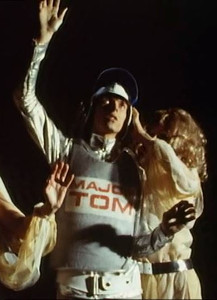
Major Tom represented Bowie’s earliest stage – sure, his style wasn’t as outrageous as Ziggy Stardust or Pierrot, but he was meant to represent everyman, floating through space.
Ziggy Stardust (1972)
Next comes my personal favourite – Ziggy Stardust. Ziggy was first seen on the cover of Bowie’s 1972 album, The Rise and Fall of Ziggy Stardust and was meant to represent an alien sent down to earth to inspire the masses. What sticks with me about Ziggy is how unique his style was, especially for the time; he had a bright red mullet, and often wore red, knee-high platform boots. His main outfits consisted of a red, white, and blue jumpsuit with huge, pointed shoulder pads, or occasionally a silver and black vinyl striped jumpsuit with huge, flared legs. He wore iridescent red and gold lipstick and most importantly, had a huge golden circle on his forehead, to symbolize his celestial origins (and also because it looks really cool).
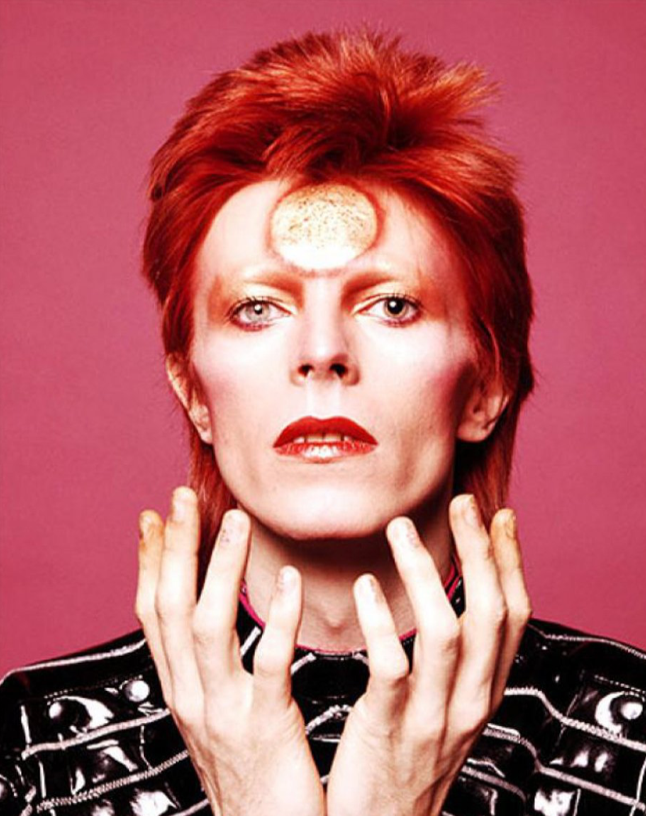
This is where we start to see David Bowie’s truly one-of-a-kind artistry take shape: Ziggy was meant to make people feel like they had someone they could relate to. For Bowie, he encapsulated this through androgyny – that is, wearing a bright red mullet and gold makeup, all while being the “special man” beloved by “his fans” (see track 9 on the album, Ziggy Stardust). This was indicative of what was to follow with Aladdin Sane, but throughout the album, it is evident that this character was meant to celebrate all of those who did not fall into the very rigid societal conventions of the time. This is especially clear in the final track of the album, Rock ‘n’ Roll Suicide, when Bowie sings, “Oh no love! You’re not alone / You’re watching yourself but you’re too unfair,” reminding listeners that society may judge you, but you must not judge yourself.
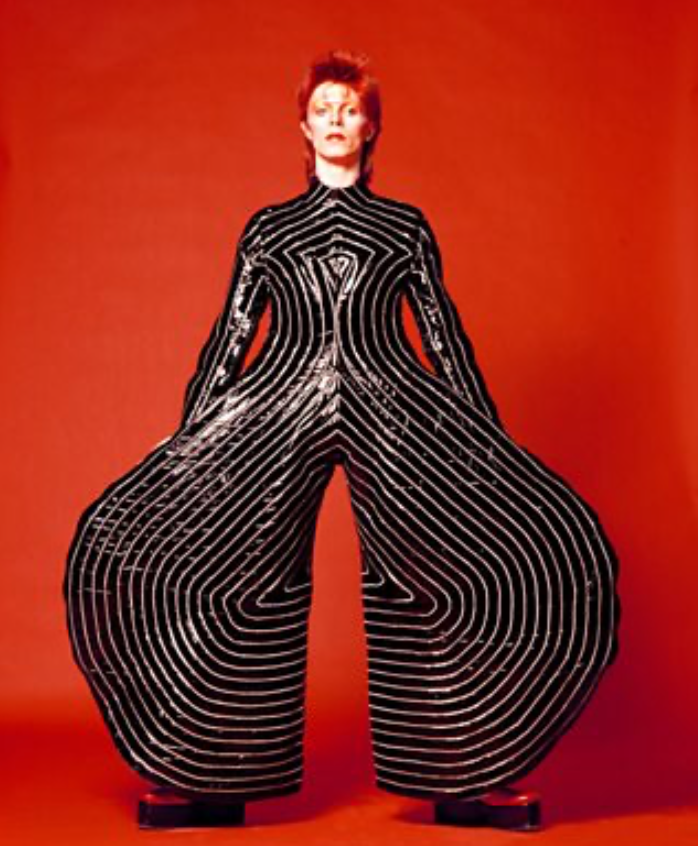
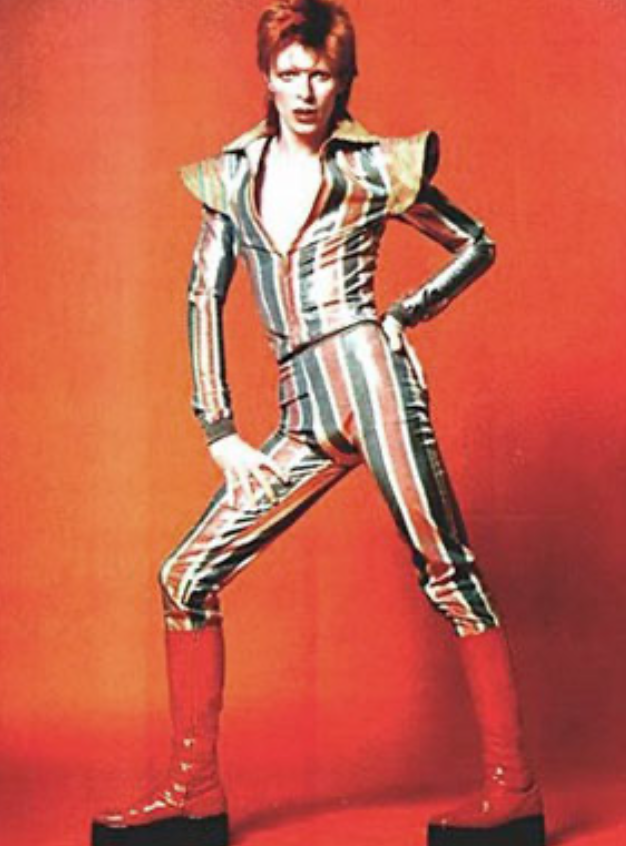
Aladdin Sane (1973)
Soon after Ziggy Stardust came Aladdin Sane. Following the “death” of Ziggy at the end of The Rise and Fall, Bowie claimed that his next album would be centered around Ziggy going to America. From this, Aladdin Sane emerged – Aladdin had the same haircut as Ziggy, but instead of a golden “astral sphere,” Aladdin’s makeup comprised the iconic red and blue lightning bolt that many of us recognize today (both of which were created with the help of makeup artist Pierre La Roche). The name itself was a pun on “A Lad Insane” which was meant to symbolize Bowie’s mental state as his career was taking off and to pay homage to his brother who was struggling with schizophrenia (https://faroutmagazine.co.uk/a-blackstar-is-born-the-story-of-david-bowies-aladdin-sane/).
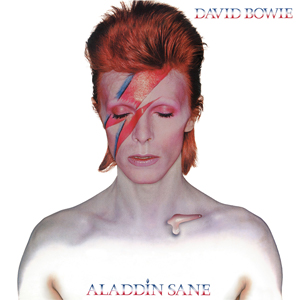
As an offshoot of Ziggy, Aladdin Sane’s clothing was less distinct – the main focus was the makeup. This marked something of a transition phase for Bowie, in which he was gaining popularity, but struggling in the background.
The Soul Man (1972-1975)
Then came The Soul Man. This character actually dates back to The Rise and Fall, when he was featured in the video for Starman (track four) as a DJ. However, The Soul Man was specifically created for Bowie’s Diamond Dogs tour in 1974, specifically for the soul songs on the set list, including music from his then soon-to-be-released R&B and soul album, Young Americans.
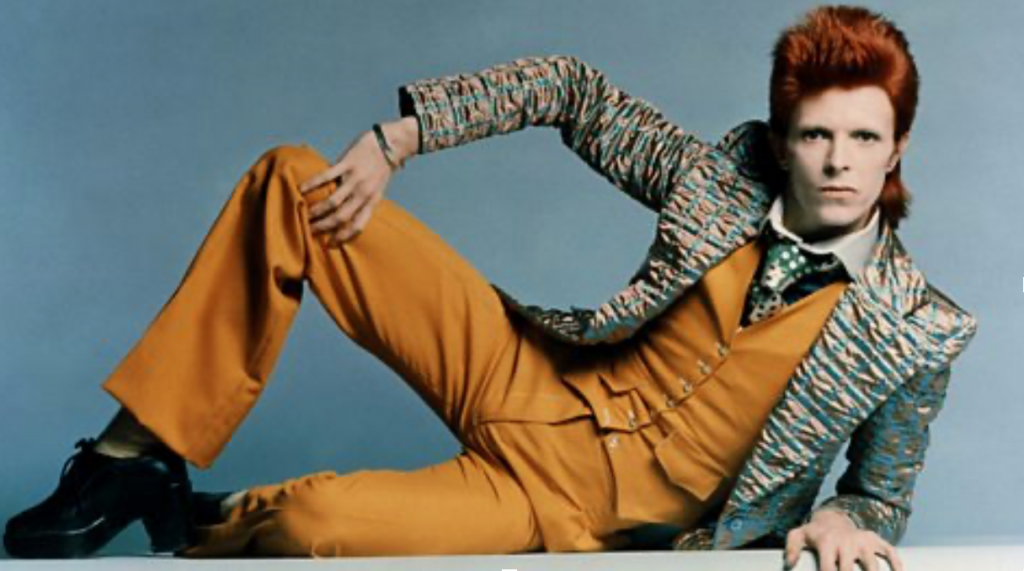
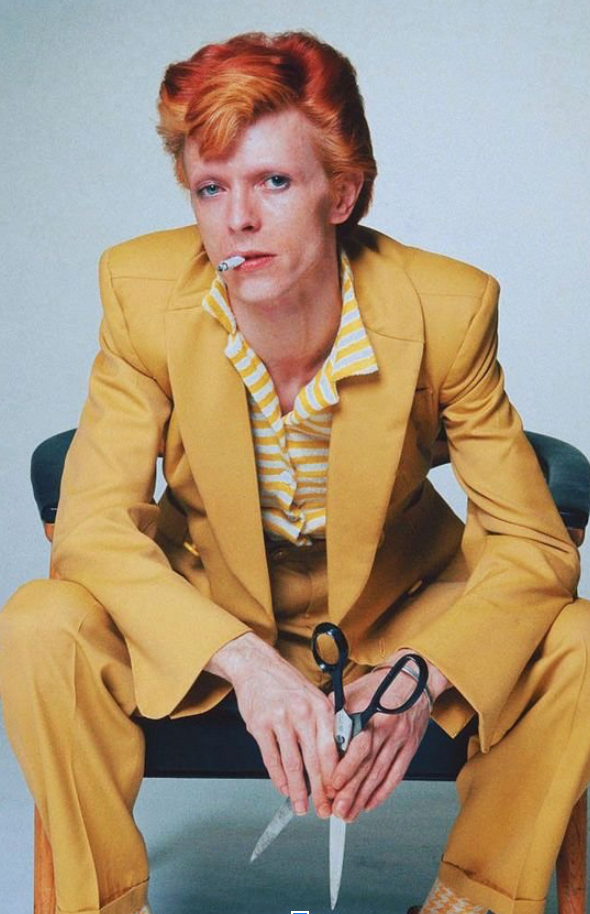
Although this character marked the lowest point in Bowie’s life in terms of drug use (he had become heavily addicted to cocaine), his appearance was extremely striking. Soon appearing on the cover of Young Americans, The Soul Man was characterized by orange, slicked back hair, shaved eyebrows, black chunky oxfords, and zoot suits with exaggerated shoulder pads and wide, open collars (or bright, patterned ties). His colour palette was mainly mustard yellow, muted turquoise, and some orange and cream. Overall, The Soul Man looked very editorial; impeccably tailored suits and perfectly coiffed hair acted as a veil for Bowie’s struggles in Los Angeles.
Thin White Duke (1975-1976)
After Young Americans’s release, Bowie continued on the R&B path with his 1976 album, Station to Station. He was still living in Los Angeles, and still grappling with substance abuse, and Thin White Duke emerged in the process. He officially appears on the cover of Station to Station, on the 1976 Isolar tour, and was played by Bowie in the film The Man Who Fell From Earth, and there is speculation on him appearing later in Bowie’s career, including in the music video from Lazarus, from Bowie’s final album.
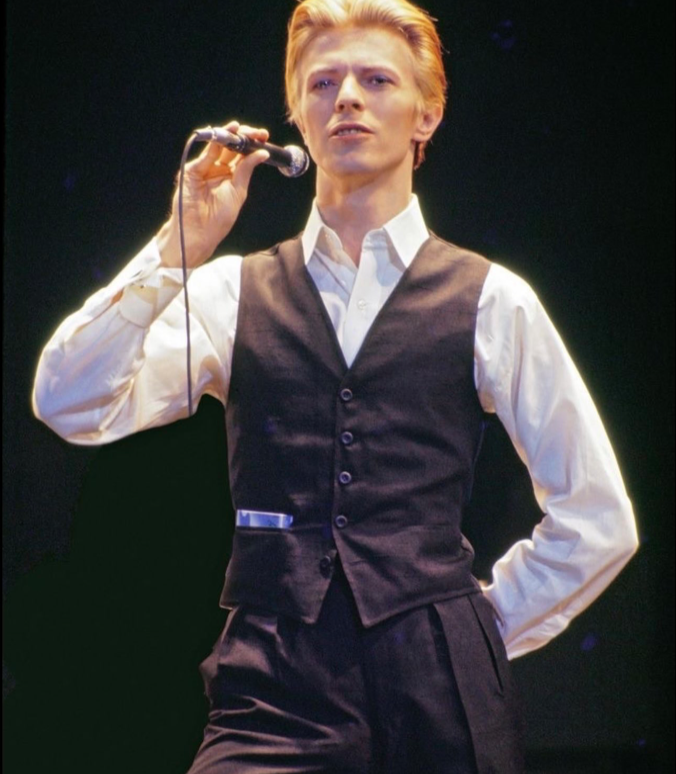
Thin White Duke was a return to simplicity. He was far different from Bowie’s other characters to date – he had blonde hair, brushed back, and wore a simple white button down underneath a black, two-piece suit (that is, a pair of pleated dress pants and a vest… never a jacket). He also always had a cigarette in his hand, just like The Soul Man did (however, I don’t know if this was a convention of these personas or of Bowie himself).
Although Thin White Duke appeared to be elegant following the end of the Isolar tour, he was retired when Bowie traveled to France and Berlin to record his album Low, and to hopefully escape his drug addiction (which is what the album was about). Bowie had clearly shed this persona because all throughout the recording sessions for Low, he sported short, naturally brown hair, signalling a reset in all respects; that is, creative, physical, and spiritual.

Pierrot (1980-1983)
Pierrot first appeared in the music video for Bowie’s Ashes to Ashes, the fourth track from Bowie’s 14th album, Scary Monsters (and Super Creeps), where he also appears on the cover (with red hair). He is a classic, old-timey clown, who wears an iridescent blue and silver clown suit with padded hips, arms, and legs. He wears iridescent periwinkle tights, silver ballet flats with a very low heel, and a white, round-top clown hat. His makeup is very theatrical – his face and neck are painted stark white, with Bowie’s natural skin peeking out by his forehead and chest; he has bright red lips, a black beauty mark, and an inverted v-shape drawn on above his eyebrows. He also sports blocked out eyebrows, red eyeshadow that extends to the brow bone, blue eyeshadow up by his temples, and heavy pink contour. Bowie’s now-black hair is also visible from under Pierrot’s hat.
Inspiration for this character came from Arnold Shoenberg in his 1912 Italian commedia dell’arte, where the character first appeared. Pierrot was meant to represent the masks that people wear in order to hide their innermost feelings, and hopefully protect themselves from pain. In Bowie’s case, he was still recovering from his L.A. years and the drug addiction that came as a consequence, so for him, Pierrot likely represented this idea of performing for others but never truly revealing oneself, as was the case with The Soul Man and Thin White Duke.
Serious Moonlight Tour (1983)
After recording Scary Monsters in New York City, Bowie recorded Let’s Dance. This album was much more upbeat than the last few albums, which reflected Bowie’s progress in his journey to sobriety. As a result, while on the “Serious Moonlight” tour (called this for the line “Under the moonlight, the serious moonlight” in Bowie’s namesake song for the album, Let’s Dance), David Bowie had rebranded, once again. His style on this tour did not culminate in one explicit character, but rather reflected Bowie’s personal style and larger trends in fashion of the early-1980s.
Bowie’s dress on this tour was characterized by a few things; there was the bleached-blonde perm (which my Dad, still a massive Bowie fan to this day, said he always wanted), high-waisted pleated khaki slacks, striped suspenders, a crisp, white button-down shirt, and always, without fail, an untied bowtie. He also wore bordeaux-coloured dress wingtips and a matching belt with a gold buckle. As well, on the album cover for Let’s Dance, Bowie is seen with this same perm hairstyle, wearing boxing gloves, possibly signalling his personal battle. Whatever the case, throughout this tour, it was clear to fans that Bowie was doing a lot better, and his clean, simple dress reflected his new outlook on life and lifestyle.
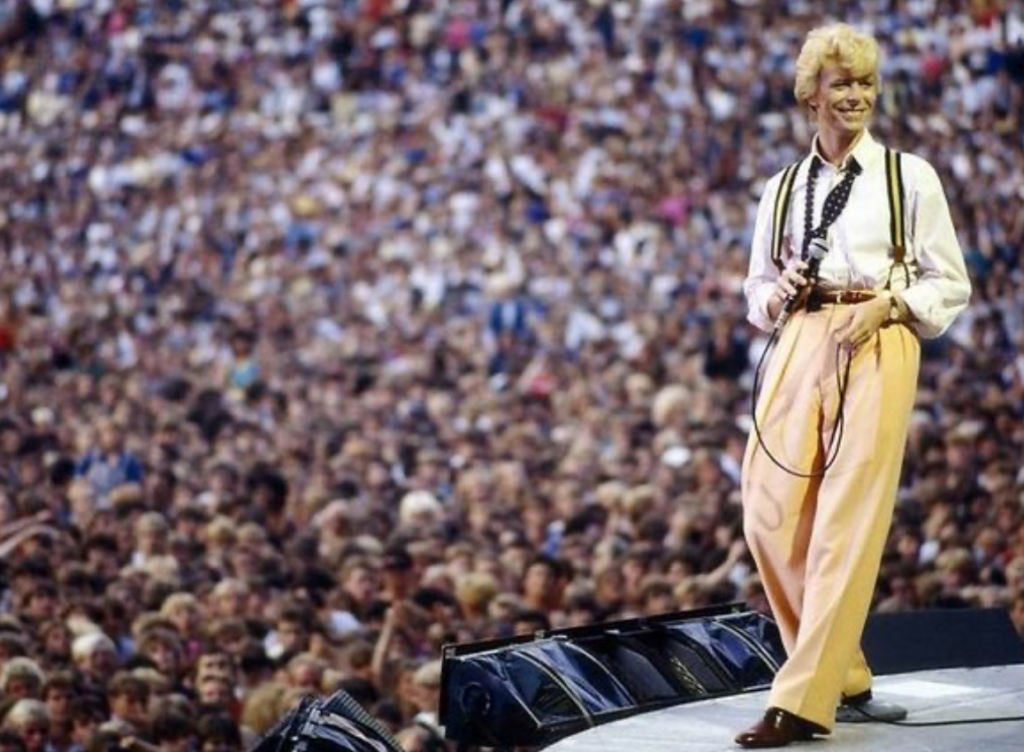
Alexander McQueen Coat for Earthling (1997)
The final moment I want to highlight in Bowie’s career is the Steve McQueen coat he wore for the cover of his 1997 album, Earthling. Although I don’t love the songs from this album, I can appreciate this coat – McQueen made this coat for Bowie in 1996 before he became the revered fashion icon we know today. Bowie had discovered McQueen in the British indie press and knew he had to do his costumes for his 1997 album and pairing tour.
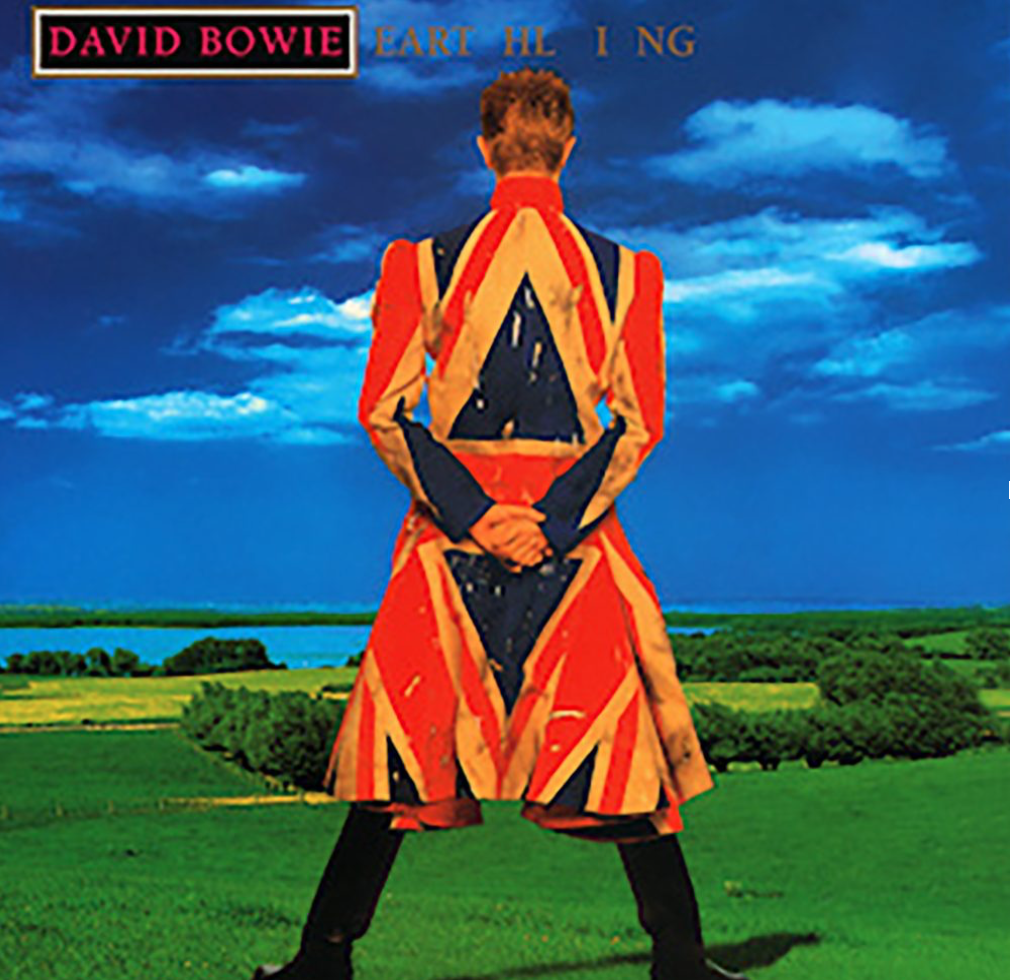
So, with the help of his then-assistant Ruti Danan, McQueen designed a dark, wool coat complete with tulle, and a pair of dark, high-waisted trousers with scattered specks of paints. Of course, these paled in comparison to the giant Union Jack flag with ornate black-lace cuffs (Vanity Fair), which was distressed for added effect. Bowie wore this jacket throughout his 1997 Earthling tour, and it became a hallmark piece for both Bowie and McQueen.
David Bowie was a creative genius, to say the least — not only was he a truly talented and soulful musician, but he wasn’t afraid to extend his artwork into his personal appearance. This is what I admire most about him — no matter where he was in life, or how he was doing, he always took care of his appearance, and was intentional with even the smallest of details. Furthermore, although he is not with us today, the everchanging Starman’s music, fantastic sense of fashion and even his awkward dance moves continue to inspire so many today.
